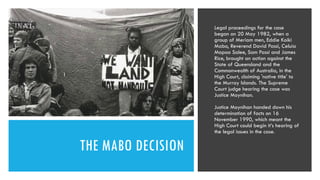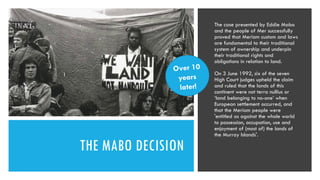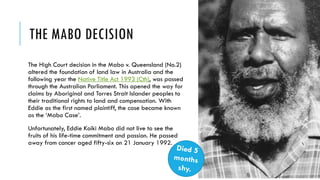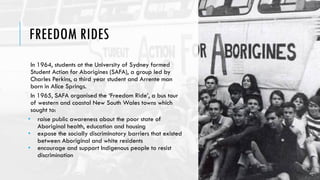This document provides background information on several topics relating to Australian Indigenous history, including:
- Pre-arrival - Indigenous Australians lived across the continent in many communities prior to European arrival.
- 1788 - The arrival of the First Fleet led to initial confusion and misunderstanding between Indigenous Australians and British settlers.
- The Stolen Generations - Between 1910-1970, government policies led to many Indigenous children being forcibly removed from their families, causing lasting trauma.
- The Mabo Decision - A 1992 High Court case that recognized Indigenous land rights, overturning the idea that Australia was terra nullius at colonization.
- The Apology - In 2008, Prime Minister Kevin Rudd delivered a national apology to the St
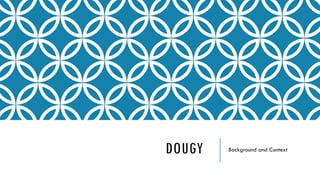

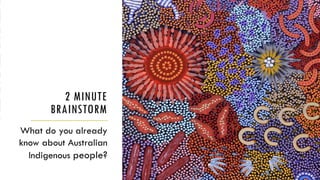










![WHY DOES THE
STOLEN
GENERATION
MATTER TODAY?
The forcible removal of Indigenous children from their families had a
profound impact that is still felt today.
For the children who were taken:
Many were psychologically, physically, and sexually abused while living in
state care or with their adoptive families.
Efforts to make stolen children reject their culture often caused them to feel
ashamed of their Indigenous heritage.
Many children were wrongly told that their parents had died or
abandoned them, and many never knew where they had been taken from
or who their biological families were.
Living conditions in the institutions were highly controlled, and children
were frequently punished harshly, were cold and hungry and received
minimal if any affection.
The children generally received a very low level of education, as they
were expected to work as manual labourers and domestic servants
(see Unfinished Business).
Medical experts have noted a high incidence of depression, anxiety, post
traumatic stress and suicide among the Stolen Generations [4]](https://image.slidesharecdn.com/dougybackgroundandcontext-210405061220/85/Dougy-background-and-context-14-320.jpg)

